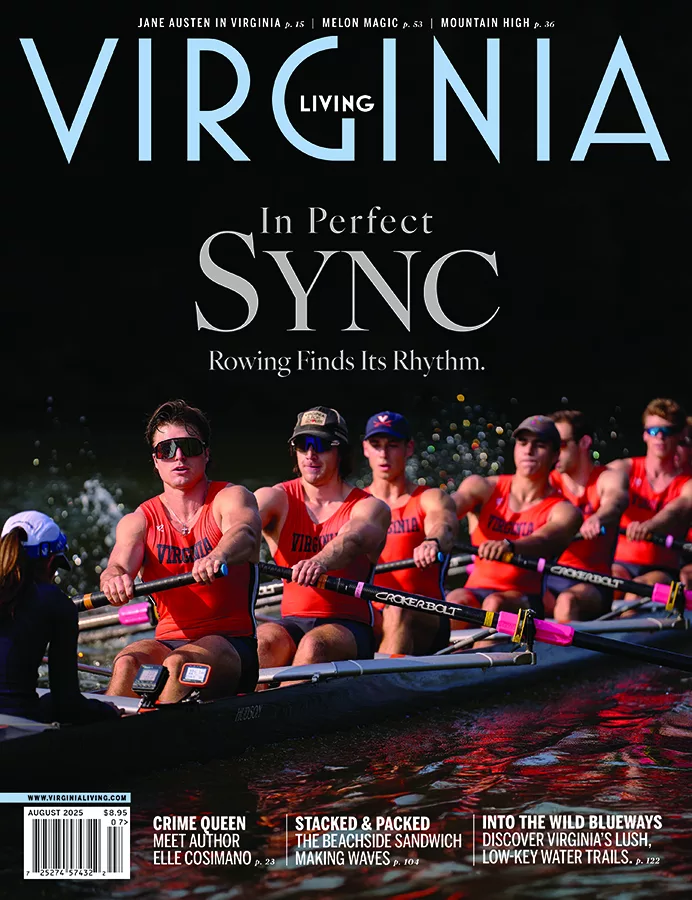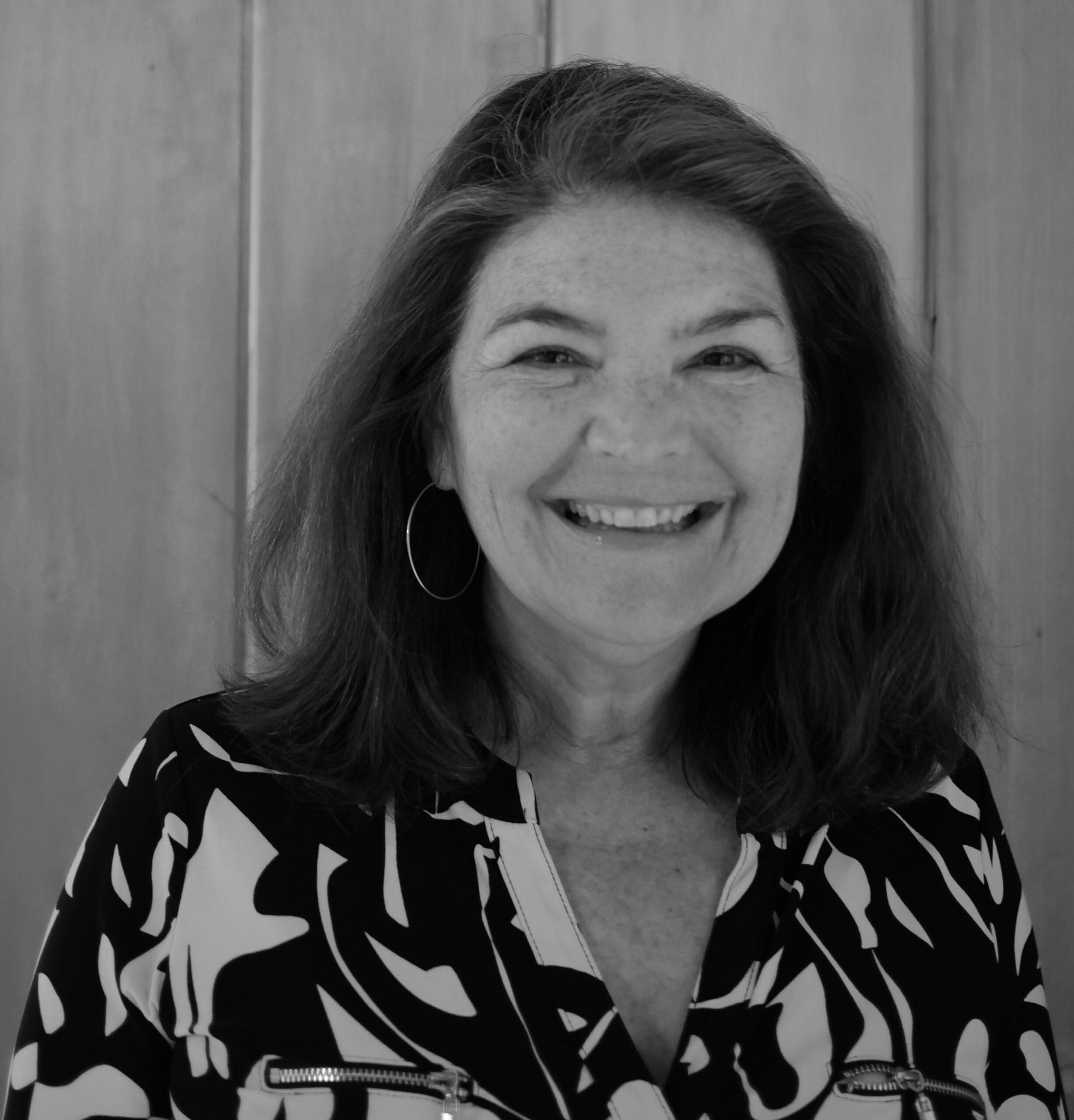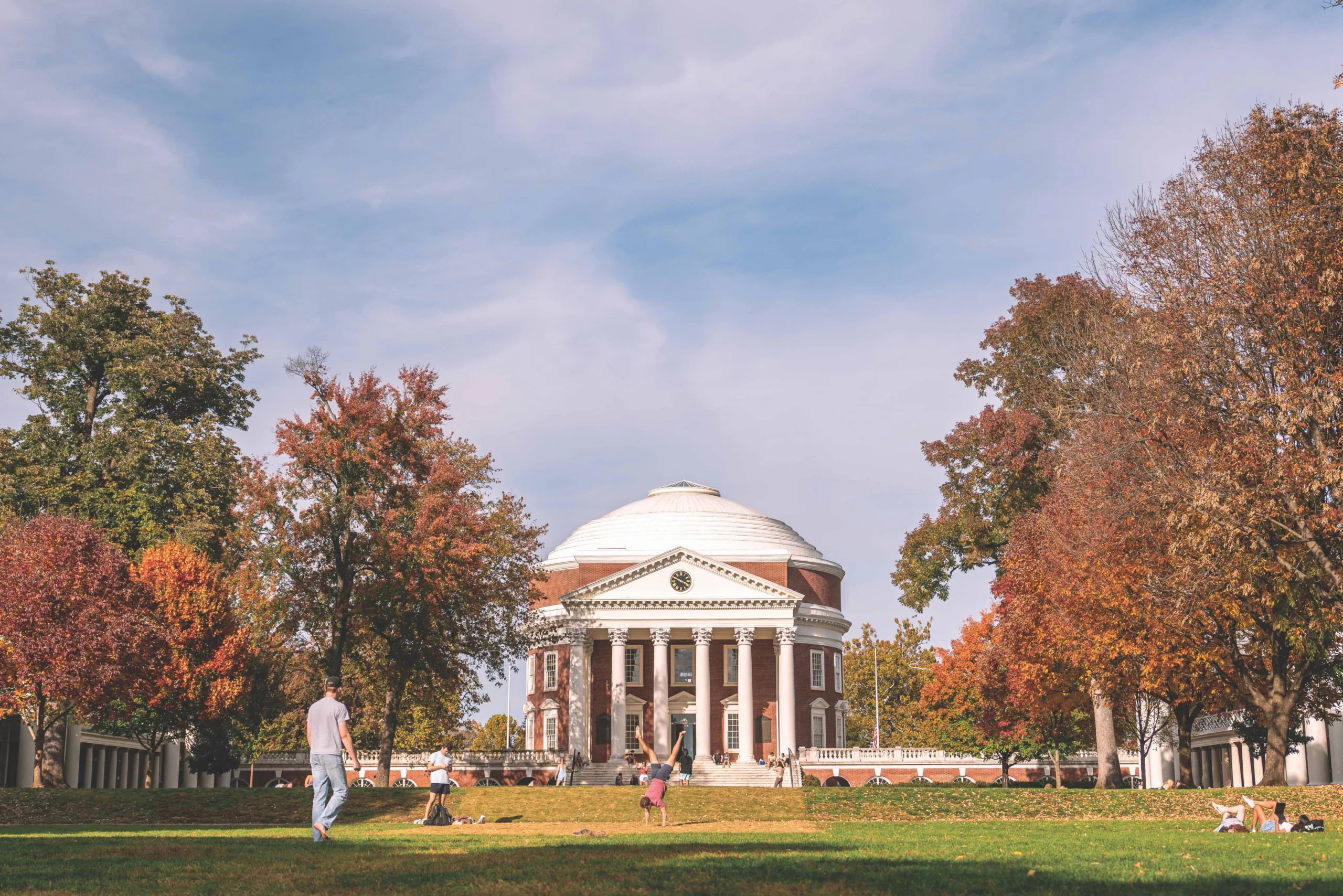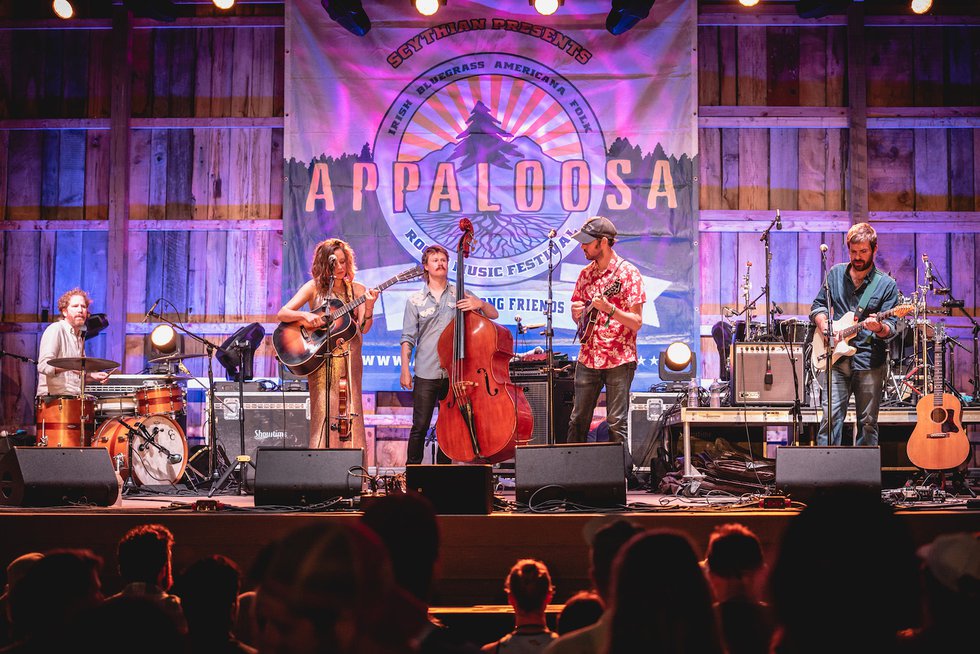Trends in retirement living for Virginia’s youthful baby boomers.






We’ve all heard it: The baby boomers are coming …. retiring, that is. The largest generation in U.S. history is reaching the age of 65 at a rate of 10,000 per day. The question is, where will they retire?
With its natural beauty, moderate climate, relatively low taxes and central mid-Atlantic location, the Commonwealth has much to offer retirees—Virginia Beach, Norfolk, Charlottesville and Williamsburg frequently appear on CNN/Money and other national “Best Places to Retire” lists.
“Virginia is an interesting state because it has so many different types of communities,” says Rodney Harrell, senior strategic policy advisor for AARP’s Public Policy Institute. “Within a few hours’ drive, you can go from mountains to college towns to farms, from beaches to urban areas like Northern Virginia … There are very few states this compact that have all of these elements.”
Most people have a similar wish list of desired services and amenities that they seek in a retirement community. For many, affordability is important. Proximity to medical facilities, assisted living, skilled nursing care, mass transit, quality shopping and restaurants, and arts and cultural events are also high on the list as is access to gyms, sports and recreational opportunities for those dedicated to living longer, healthier lives. But many baby boomers are seeking that extra something special in their communities—a vibrancy—and here’s where they are finding it:
Gated, 55+ Communities
When his grandchildren visit, Don Lewis can often be found dangling 205 feet over the grounds of Busch Gardens on the Griffon, one of the tallest and fastest dive roller coasters in the world. At 68, this former Navy pilot and air show producer is not about to slow down in his retirement. “I love doing exciting things,” he says. That’s one of the reasons he enjoys living at Colonial Heritage in Williamsburg, a gated neighborhood for those age 55 and older. “It’s an incredibly social community,” says Lewis, who has lived there for eight years and knows all of the neighbors on his block. He goes to dances at the clubhouse, organizes tours for the history club and golfs three days a week with his men’s group on his community’s challenging, Arthur Hills-designed 18-hole course.
“I Googled ‘gated 55 and over community,’” says Lewis, describing how he found a home. “There were only two in Virginia with a golf course.” He and his wife Nadine (now deceased) liked Virginia for its weather and proximity to family in the Outer Banks. They also wanted to be near a major airport and a hospital. Colonial Heritage is close to both the Williamsburg/Newport News and Norfolk airports and less than two miles from Williamsburg Sentara Hospital, a 145-bed facility that opened in 2006.
Like the Lewises, many retirees in Williamsburg are also transplants. “People are coming from all over the country to retire here,” says Paula Tenenbaum, a realtor with Long & Foster who specializes in 55-plus communities. “We’ve got 10 different golf courses in Williamsburg. Golf is a very big draw.” Plus, she says, housing prices are reasonable. “You can get an absolutely gorgeous home here for the low $300s.”
Retirees are drawn to the hassle-free living, security, athletic facilities and robust social life offered by gated, 55-plus neighborhoods. The homes typically feature open floor plans, first-floor bedrooms and, often, maintenance-free exteriors or yards. Other examples of these neighborhoods in Virginia include Heritage Hunt–A Lennar Active Adult Community in Gainesville and Del Webb’s communities in Ashburn (Potomac Green) and Fredericksburg (Celebrate).
In Colonial Heritage, Lewis enjoys the camaraderie of neighbors, who are always willing to pick up his newspapers and mail when he travels: “Neighbors are always there to help. The support group is incredible.”
Urban Living
A two-bedroom condo in Old Town Alexandria costs an average of $500,000, but for those drawn to big city life, like Ann Kavaljian, it’s worth the price. She lives in Alexandria House, a high rise with sweeping views of the Potomac and the nation’s capital. Set amidst the cobblestone streets and historic homes of Old Town, “It’s very convenient and walkable. There’s a Trader Joe’s a couple of blocks away and restaurants up and down the street,” says Kavaljian, a realtor with Long & Foster’s Alexandria/Old Town office who has lived in the area for 50 years. She can stroll to church, her nail salon, and to a nearby park where she takes her five-year-old granddaughter. And whether by car or by Metro, “D.C. is 10 minutes away.”
Events like an annual Christmas party and socials around the rooftop pool bring together the multi-generational residents of the 200-unit building. “It’s more of a neighborhood than just urban living,” says Kavaljian. “We know each other.”
Throughout the country, an increasing number of urban seniors like Kavaljian are digging in their heels—“aging in place,” as the national movement is known. Cities like Norfolk (recently named one of the “10 Best Places to Retire” by CNN/Money), Richmond, Alexandria and Arlington are retaining—and even attracting—retirees with their access to universities, culture, top-notch hospitals and mass transit.
Growing numbers of baby boomers like the cosmopolitan vibe of city living. Ceci Amrhein, a realtor with Joyner Fine Properties and resident of Richmond’s historic Fan district, frequently sells historic condos and single-family homes to empty nesters fleeing suburbia. “They want to walk to places—stores, shopping and restaurants–and not have to get in their cars all the time,” she says.
Her clients seek historic homes, but they are not interested in renovation. “They’d rather have them turnkey,” says Amrhein. And they don’t mind giving up their sprawling suburban yards for elegant city courtyards. “But it’s very interesting. They’re not necessarily moving to smaller houses,” says Amrhein, who sells a lot of 5,000 square-foot-houses to this target group.
Responding to the increasingly aging population, local city governments are working to make their communities more senior-friendly. In Arlington, mixed-use neighborhoods feature easy access to transit, local businesses and retail, allowing for car-free living. Officials are widening sidewalks, installing crosswalk countdown clocks, adjusting curb heights and adding low-floor buses to the city’s fleet to make boarding easier. Additionally, Arlington County’s Department of Human Services, through its Aging and Disability Services Division, coordinates services that support aging in place.
Help is also arriving through a growing movement known as the “village network.” These non-profit organizations are dedicated to helping urban seniors remain in their homes for as long as possible. “In the D.C. area alone, there are 27 villages,” says Cele Garrett, executive director of the AHA! At Home in Alexandria village. Garrett’s organization helps Alexandria seniors “who want to stay here a little bit longer—but they may need a little help,” she says. For an annual fee ($550 single, $800 household, $250 social only), village members gain access to transportation and other services, educational workshops and social get-togethers, including museum visits, a monthly TGIF happy hour and ladies’ nights out.
Amrhein understands the desire to age-in-place in neighborhoods like hers in the Fan. “There’s always something going on. Neighbors do a whole lot together. It’s so alive. It’s an energy that I think you get from the close proximity of the houses.”
College Towns
Military couple Mary and Marcus Williams have lived all over the world, but they’ve chosen a college town for their retirement. Although Marcus still works at the Pentagon, the couple already has purchased a home in Blacksburg. On fall weekends, they join the throngs of maroon and orange clad Virginia Tech fans cheering on the Hokie football team. The Marcuses, who are in their 60s and whose youngest daughter attended VT, also enjoy the mountains and hiking trails as well as the town’s friendly, small-town living.
According to Mary, Blacksburg offers everything they need in their retirement—reliable mass transit, nearby medical facilities and plenty of good restaurants, antique stores and cultural opportunities. They also enjoy the seasonal influx of students. “They bring energy, and there’s a refreshing innocence and hopefulness about people that age. It’s stimulating,” she says.
Having once set out to change the world, baby boomers are now reinventing retirement. One growing trend shows retirees moving to college towns—generally smaller towns that, because of their university ties, offer access to sophisticated arts and cultural events, a great variety of sports and top quality hospitals, shopping and restaurants. Retirees can even pursue a degree or audit classes.
“We don’t want to sit on a front porch in a rocking chair and fade away,” says Andrew Carle, founding director of the Senior Housing Administration program at George Mason University.
Carle has followed the growing trend of baby boomers retiring to college towns and the continuing care retirement communities that are springing up around them. He has created a model for “university-based retirement communities,” as he calls them. Among the criteria, ideally, the UBRC is near a college with at least 15,000 to 20,000 students. “A university or college of that size is going to have a whole lot going on around it,” says Carle.
In Charlottesville, an increasing number of UVA alumni wanted to retire to the area, so the university donated land and located a developer for The Colonnades, a retirement community located less than three miles from The Grounds. Set on 59 wooded acres, the continuing care retirement community has 39 cottages and 179 apartments for independent living, 40 assisted living apartments, 16 rooms in memory care and 34 skilled nursing beds. There’s also an on-site health clinic, where a UVA gerontologist provides care. The residents also enjoy proximity to both UVA and Martha Jefferson Hospitals.
About 20 percent of the residents are UVA alumni, and around 40 percent have a family connection to the school. “We try to work closely with the university,” says Mark Kastan, executive director of The Colonnades. The community runs regular buses to sporting and cultural events on campus. The women’s basketball games are especially popular since the games aren’t as crowded, he says. There’s a lot of interaction with students. For instance, sorority members will often “adopt” grandparents.
Many of the residents also take classes at OLLI, UVA’s lifelong learning center. There are many similar non-degree-granting programs in the state, including the College of William & Mary’s Christopher Wren Association, which usually offers more than 100 classes per semester to its more than 1,600 members, most of whom are in their 70s. For a fee of $100 per semester, members can take as many classes as they wish, choosing from subjects as diverse as oil painting, photography, history and yoga. Computer classes are especially popular. According to Sherry Barrow, director of administration for Christopher Wren, “Our members are people who are very active and want to remain that way, both physically and mentally.”
GMU’s Carle describes today’s retirement ethos succinctly: “Baby boomers have zero interest in retiring and doing nothing.”
AARP.org/states/va.html, ColonialHeritageVa.com, HeritageHunt.com, DelWebb.com, AtHomeInAlexandria.org, VTVNetwork.org, GMU.edu, SunriseSeniorLiving.com/communities/The-Colonnades, Virginia.edu/OlliUVA, WM.edu/sites/cwa









